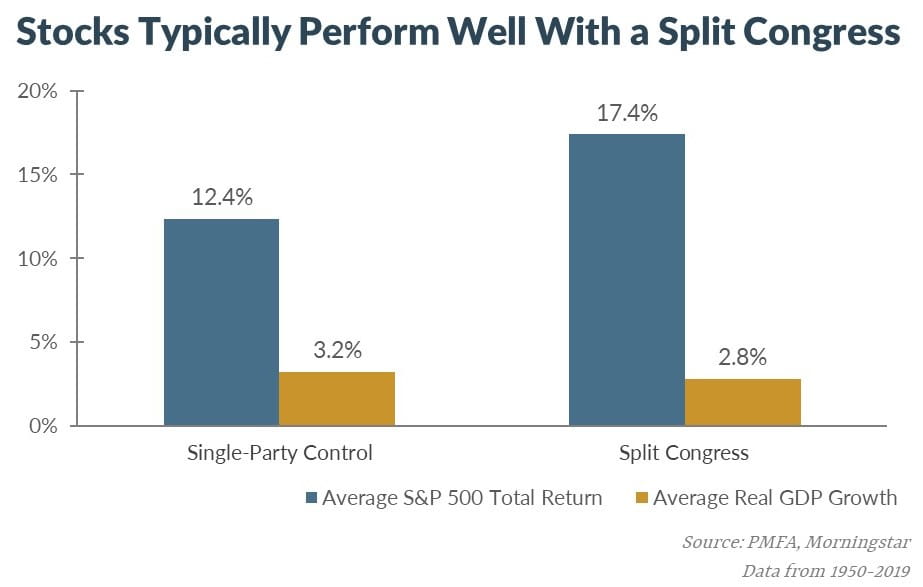
In 2018, Democrats claimed a majority in the House of Representatives, while Republicans maintained control of the Senate, creating a split Congress. The upcoming election opens up the potential for this to change, with 35 Senate seats up for grabs this year and polls suggesting that several seats are still in play. Of the 35, Republicans currently hold 23, with 12 held by Democrats, putting the GOP in a position in which they have to defend more seats to maintain their majority in the upper house of Congress. As of now, the Democrats are expected to maintain their majority in the House.
Historically, equity markets have generally performed well when Congressional leadership is split between the two parties. Why? Most likely it’s the natural checks and balances that result, preventing either party from making sweeping policy changes, regardless of which party controls the White House. That said, both equities and the economy have generally performed positively in either circumstance.
Shifts in the political climate may create volatility at times, but don’t dictate the direction of the market — nor does voter satisfaction with their elected officials. Congressional approval polls have been overwhelmingly negative for over 15 years, having last registered approval of more than 50% in a Gallup poll in April 2003. The S&P 500? That has nearly quadrupled over that period (from 866 to 3328). Stay invested.
Past performance does not guarantee future results. All investments include risk and have the potential for loss as well as gain.
Data sources for peer group comparisons, returns, and standard statistical data are provided by the sources referenced and are based on data obtained from recognized statistical services or other sources believed to be reliable. However, some or all of the information has not been verified prior to the analysis, and we do not make any representations as to its accuracy or completeness. Any analysis nonfactual in nature constitutes only current opinions, which are subject to change. Benchmarks or indices are included for information purposes only to reflect the current market environment; no index is a directly tradable investment. There may be instances when consultant opinions regarding any fundamental or quantitative analysis may not agree.
Plante Moran Financial Advisors (PMFA) publishes this update to convey general information about market conditions and not for the purpose of providing investment advice. Investment in any of the companies or sectors mentioned herein may not be appropriate for you. You should consult a representative from PMFA for investment advice regarding your own situation.




